WWII in the Far East
WWII in the Far East
After spending a year based on the Khyber, my father, Tom Frost was transferred to the Army Intelligence Corps in Karachi on 20 March 1943. His training began immediately and he was assigned to Intelligence Course No 15 at the Army Intelligence School in Karachi. The School had been established in January 1941 and was located in the Old Government House, an attractive building in the best part of town and standing in its own grounds. He was oon promoted to Captain and began a career that took him from India to Burma via Ceylon. His unit was attached at first to 3 Special Service Brigade.
For the part of his career relevant to 3 Special Service Brigade, Captain Austin Thomas Dillon Frost (Tom), served in 574 Field Security Section (574 FSS) as an intelligence officer.
It’s likely that 574 FSS did not operate directly under the Combined Operations Command. However, where 574’s activities involved amphibious landings, or raids, Commando support was often provided… as in the case of the main ‘snatching’ operation described on this page. My father’s pay records always indicate that he was ‘attached’ to other units, but he was always noted as being in the Intelligence Corps (IC) – his reporting line was up through the IC route. His war diaries are full of references to trips by LCP (Landing Craft Personnel) – especially in the region of the Naf river.
Field Security was set up following an assessment of the shortcomings of Army Intelligence before and during World War I. During the years 1914-18 the Intelligence Police were formed to protect troops against the work of enemy agents among the civilian population in the theatre of war. It was very much an emergency arrangement and with poor recruitment, selection, inadequate training and poor supervision, their efforts often caused more problems than they solved.
With lessons learnt between 1937 and 1940 the Field Security Police were formed as a wing of the Corps of Military Police (CMP) at Mytchett near Farnborough, UK. NCOs of outstanding ability were trained in small numbers and sent back to their units. At the outbreak of WW2 sections of these trained men were formed in support of the ill-fated British Expeditionary Force (BEF). Other sections were formed at ports from local residents and both did excellent work. However, the BEF Sections were hampered by a lack of language skills and by the public perception of the word ‘police’ which did not encourage locals to come forward with information.
My father was born in Poona, India and consequently spoke Urdu fluently. He enlisted in 1939 at the Artists’ Rifles Drill Hall in Euston Road, London and after initial officer training was posted to India in 1941. After acclimatisation, he was attached to Royal Gharwhal Rifles based at Landi Kotal on the Kyber Pass in April 1942. In march 1943 he was transferred into the Intelligence Corps and underwent a 3 month training programme.
On 15 June 1943 he was promoted to Acting Captain and given the task of forming 574 FSS in Karachi, attached to the Royal Indian Army Service Corps. 574 FSS was a composite section made up of both British and Indian troops, including Sergeants Jack Lawrence, Eddie Redding and George Grasby.
A typical composite section when at full complement consisted of: 1 FSO (Lieutenant or Captain); 1 Warrant Officer; 2 Sergeants; 3 Corporals; 1 VCO (Jemadar); 3 Havildar; 3 Naiks; 2 L/Naiks and 1 batman-driver (BOR/IOR). When fully equipped the section was provided with two 15 cwt trucks; 8 motor cycles and 5 five bicycles. The section was equipped with Sten guns.
574 FSS was initially attached to 3 Special Service Brigade, a Commando unit with special duties. 3 Special Service Brigade was a combined unit consisting of 5 Commando and 44 Royal Marine Commando. The Brigade was attached to XXXIII India Corps under the command of Lieutenant General (later Sir) Montague Stopford. In theory only volunteers were required for special duties as illustrated in the following recruitment scenario.
The section was assembled in a circle around a colonel who explained that the work would be difficult and dangerous. He added that no one who was apprehensive about the prospect would be required to go. ‘I want only volunteers,’ he said and looked at each of them in turn. ‘Any of you who are scared should step into the centre now.’ He paused for effect and added, ‘Let’s see who the yellow bellies are.’ No-one moved so he declared them all to be volunteers! Apocryphal or not the point is made – the work was not for the timid or faint hearted.
Field Security I(B), responsible for military and civil security, carried out both espionage and counterespionage activities. This sometimes involved setting up networks of local agents who reported to FS. More typically, the role of FS in peace time was to set up counterespionage operations in towns and villages. In Burma this included tracking down agents in villages and towns that had been retaken from the Japanese and seeking out and arresting double agents in Japanese held territory.
Training
In Bombay the Section began training in earnest for their first action, a seaborne invasion of the Arakan. In November the section regrouped and soon took part in a Beach Operation in the Mahd Island area near Bombay. The operation was scheduled for 14 November 1943 and for operational purposes the section was divided into three groups; the Advance Party; the Train Party and the Rear Party. Sergeant Lawrence led the Advance Party with a 15 cwt truck and the bulk of section stores. The Train Party under CQMS Chappell loaded two motor cycles and five bicycles on to a train and travelled in relative comfort to the assembly point on the coast. The Rear Party, led by Captain Frost, followed with a second 15 cwt truck and the section jeep.
The Section boarded a naval vessel and sailed to a point off the coast. They clambered into a landing craft and set off towards the distant shoreline. As they approached the beach, Sergeant Eddie Redding wondered whom the enemy was when, having called for absolute silence, the major in charge of the landing craft grabbed a soldier by the throat for daring to speak and shook a clenched fist in the man’s face. ‘If you utter another word, I’ll smash your f*****g face in,’ he whispered. It turned out that this was the CO of the unit (part of 3 Special Service Brigade) to which they were to be attached. The CO knew that any breach of discipline while in action against the enemy could be the difference between life and death. The point was well made!
For the most part the men enjoyed the training which was a welcome relief from the routine of barrack life. However, as news of the good progress of the fighting in Europe and in the Far East arrived, Lt Frost became increasingly frustrated by the diminishing prospect of seeing action… he could be heard grumbling to anyone who would listen about ‘not being up with the fun.’
The exercises were not always on a grand scale. On one occasion 574 FSS took an Arab dhow to check out places where illegal landings might be made. At night they slept on deck together under the spare canvas sails. The dhow was about the size of a fishing smack and was riddled with cockroaches and voracious bedbugs. The men messed on tinned bacon heated over a charcoal fire on a slab of rock as cockroaches chased each other over their feet. The latrine consisted of a rope to hang on to and two planks stuck out over the sea – one for each foot.
On the 29th of December 1943 the Section moved from Bombay to Ahmednagar near Poona and then on to Kurla for medical examinations. The ‘examinations’ were brief. ‘You all look OK to me,’ the Medical Officer said, ‘so I’ll not bother examining you unless you think that there is something I should know about.’ They were all passed fit for active service!
They moved on again. This time to a place called Kedgodan. Sergeants Redding and Lawrence went by motor cycle. On the way a bullock charged across the road and smashed into Sergeant Lawrence. He left his bike at 40 mph and landed in a ditch on the other side of the road. The bike was a write-off and Sergeant Lawrence was left with a bad cut below his left knee that almost ended his time in 574 FS section.
On 7 February 1944 574 FSS moved from Kedgodan and back to Ahmednagar where it was once again attached to 3 Special Service Brigade. Two weeks later, on 22 February at midday, the Section set off on a secret mission from Bombay on HMS Keren, an auxiliary cruiser. When at sea cholera inoculations were ordered for all personnel. They sailed past Colombo to Madras arriving at 10:30 am on 27 February to take on stores.
They sailed as part of a convoy from Madras on 27 February 1944 and continued towards their, as yet, secret destination, stopping briefly in Ceylon. They then left on what was to be the last leg of their journey across the Bay of Bengal. For most of the time they had no idea what their mission was but the issue of mepacrine (anti-malaria) tablets left them in very little doubt.
When they were clear of Madras Captain Frost called a ‘prayer meeting.’ He opened a sealed envelope and brought out several files, one for each member of the section. The files contained detailed descriptions, photographs and addresses of Japanese collaborators living in the so called Millionaires’ Square in Akyab. The information was based on intelligence provided by Lieutenant Colonel Tony Mains, Chief Security Officer, XIV Army GSO II in late 1943. The collaborators were to be arrested immediately prior to the recapture of Akyab. The plan for 3 Special Service Brigade Commandos was to make a surprise landing on the island and for 574 FSS to go in after them. The latter were to locate the premises concerned, arrest the individuals found there and bring them out. It was to be a swift snatch. (Photo; Cpt Frost, centre, with members of the Section in Dutch Celebes – Oct 1945).
In the event the landing never took place. It is thought that the strength of the Japanese based on Akyab was found to be greater than expected following aerial reconnaissance. Instead both 3 Special Service Brigade and 574 FSS section landed at Cox’s Bazaar on the Bengal coast on 4 March 1944. After a short stay they travelled down the River Naf to a small village called Nihila on the Teknaf Peninsular overlooking occupied Burma. Their new base was less than 40 miles from the place Captain Frost’s brother Harry had been killed. From this base 3 Special Service Brigade Commandos made several raids sustaining casualties, but 574 FSS section did not go with them. By the end of March casualties in 5 Commando alone were 23 killed in action, 2 who subsequently died of wounds received and 42 wounded.
Meanwhile in the Arakan, the fighting continued and the Section was kept very busy. Sergeants Lawrence and Redding made many journeys up narrow river creeks by kishti, a native boat rowed by a man standing in the rear. Their normal modus operandi was to visit small villages to ascertain if any strangers had been seen in the area. The headman usually set up a large table under the village mango tree and produced a selection of homemade alcoholic brews of uncertain origin. The two soldiers joined in the drinking and did their best to continue the discourse despite the effects of the powerful jungle juices!
It was not uncommon for Section members to be detached to gather information in far flung places and to send back reports. Sergeant Eddie Redding, for example, was sent on detachment at Maungdaw. From there, he made frequent visits to Bathidong, St. Martins Island and IV Corps HQ, always keeping in radio contact with Captain Frost back at Nihila.
From time to time more unusual situations arose requiring the expertise of FSS. On one occasion the Section received information that a member of ‘V’ Force had been acting as a double agent. Captain Frost, together with Sergeant Lawrence, crossed the river into the Arakan to bring the agent in. In the course of this operation they visited Maungdaw where a most remarkable meeting took place. As they met an Intelligence Corps Sergeant, Sergeant Lawrence felt they had met before… a view shared by the Corp Sergeant. After a while Sergeant Lawrence exclaimed, “Graece Audaciar!”… a phrase immediately recognised by the other. It transpired that they had been students in the same Latin class at Grammar School back in England. In the account of Caesar’s wars the phrase “Graece audaciar,” occurs frequently. It means “the brave Greeks,” but when spoken sounded like “Crikey ‘ow dark ee are.” In the winter months Sgt Lawrence’s classmate Harrison often cried out “Graece audaciar” during class and the Latin beak always replied with no trace of a smile: “Very well Harrison, put the lights on!” They never saw Sergeant Johnny Harrison again after leaving him in his jungle hideout. He came under heavy shellfire and may not have come out alive.
Captain Frost and Sergeant Lawrence continued through the British lines and were briefed on the whereabouts of the V Force operative, Mohammed Khan. When they tracked him down the real purpose of the operation was disguised when he was told that he was required back at base for a special briefing. He was eventually taken to XV Corps Head Quarters in Bawli Bazaar but not long after, he escaped.
Returning at night from an expedition, Sergeants Lawrence and Ewebank stumbled upon a forward lookout post. A Sikh soldier challenged them “Pass friend.” When they attempted to pass, he shot his rifle bolt and shouted again “Pass friend!” Realising that the Sikh soldier asking for the password, they stopped in their tracks. To continue would risk being fired upon without further ceremony. Sergeant Lawrence did not know the password and Sergeant Ewebank had forgotten it. Fortunately for them both, Sergeant Ewebank’s loss of memory was only temporary and he shouted back the day’s date… “Eighteenth of March!” They were allowed to proceed.
Frequently, when returning from these operations the men found that the tide had ebbed and they were forced to cross considerable stretches of mud flats, sometimes sinking alarmingly. However, experience soon taught them they would not disappear and they almost become used to the stinking slime. On the night of the departure of 3 Special Service brigade, members of the Section were out on a night patrol by Landing Craft Personnel (LCP) on the Naf River. Captain Frost had the bright idea that it might be possible to swim across cross the river rather than crawl across the tidal mud flats. The problem was that the combination of the river flowing into the sea and the rise of the tidal waters created a rip tide. The Section members were not convinced that it was safe so Captain Frost dived fully clothed into the maelstrom to lead the way. Within seconds he had vanished. As nothing could be done the Section members brewed a cup of tea. An hour later Captain Frost turned up covered in mud and looking very bedraggled. He looked at his men and said with a grin, “You sh**s!”
They then moved north to Kohima, where the Japanese tried and failed to invade India. After what must have been a fairly torrid time there, he moved south to Toungoo.
Captain Frost was later posted to Indochina (Operation Masterdom) in September 1945 and with 200 others flew to Saigon to take the surrender of 70,000 Japanese troops while the rest of the Division went by sea. At this time he was then commanding 604 FS who were attached to HQ 20 (Indian Division). As the Viet Cong under Ho Chi Min (who had been trained and armed by the Americans) started to cause problems, the Allies had to re-arm some Japanese soldiers to provide protection while the main force was still at sea. My father told me that he ended up driving around Saigon in his jeep with armed Japanese troops providing close protection – which must have been a strange turn of events as he had been fighting against the Japanese in Burma just a few weeks before. A later mission saw Captain Frost in the Dutch Celebes to help resolve a mutiny of Dutch troops.
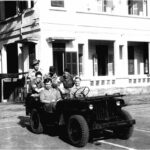
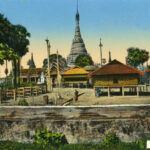
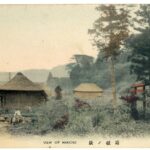
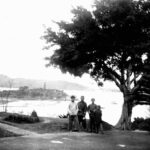
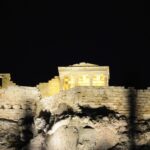

Leave a comment